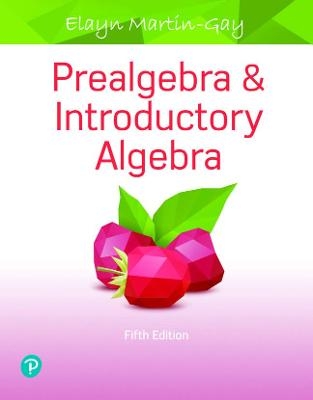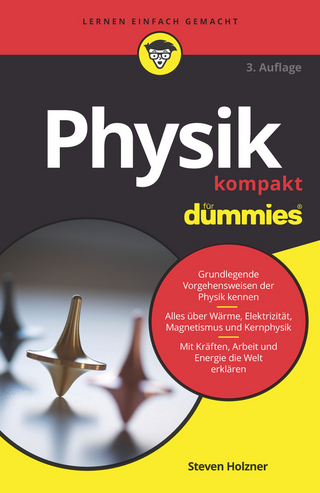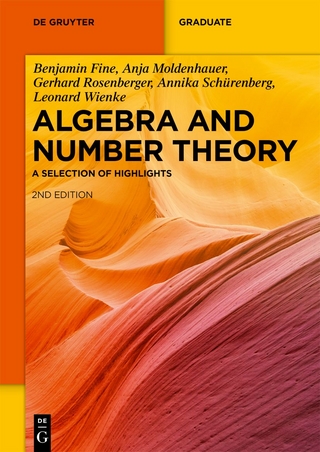
Prealgebra & Introductory Algebra
Pearson (Verlag)
978-0-13-470763-1 (ISBN)
- Titel erscheint in neuer Auflage
- Artikel merken
The Martin-Gay principle: Every student can succeed
Elayn Martin-Gay’s student-centric approach is woven seamlessly throughout her texts and MyLab courses, giving students the optimal amount of support through effective video resources, an accessible writing style, and study skills support built into the program.
Elayn’s legacy of innovations that support student success include Chapter Test Prep videos and a Video Organizer note-taking guide. Expanded resources in the latest revision bring even more updates to her program, all shaped by her focus on the student – a perspective that has made her course materials beloved by students and instructors alike. The Martin-Gay series offers market-leading content written by a preeminent author-educator, tightly integrated with the #1 choice in digital learning: MyLab Math.
Also available with MyLab Math
By combining trusted author content with digital tools and a flexible platform, MyLab personalizes the learning experience and improves results for each student. Bringing Elayn Martin-Gay’s voice and approach into the MyLab course - though video resources, study skills support, and exercises refined with each edition - gives students the support to be successful in math.
Note: You are purchasing a standalone product; MyLab Math does not come packaged with this content. Students, if interested in purchasing this title with MyLab Math, ask your instructor to confirm the correct package ISBN and Course ID. Instructors, contact your Pearson representative for more information.
If you would like to purchase both the physical text and MyLab Math, search for:
0134674111 / 9780134674117 Prealgebra & Introductory Algebra Plus MyLab Math with Pearson eText -- Access Card Package, 5/e
Package consists of:
013470763X / 9780134707631 Prealgebra & Introductory Algebra
0135115809 / 9780135115800 MyLab Math with Pearson eText - Standalone Access Card - for Prealgebra & Introductory Algebra
About our author Elayn Martin-Gay has taught mathematics at the University of New Orleans for more than 25 years. Her numerous teaching awards include the local University Alumni Association’s Award for Excellence in Teaching, and Outstanding Developmental Educator at University of New Orleans, presented by the Louisiana Association of Developmental Educators. Prior to writing textbooks, Elayn Martin-Gay developed an acclaimed series of lecture videos to support developmental mathematics students. These highly successful videos originally served as the foundation materials for her texts. Today, the videos are specific to each book in her series. She has also created Chapter Test Prep Videos to help students during their most “teachable moment” (as they prepare for a test) along with Instructor-to-Instructor videos that provide teaching tips, hints, and suggestions for every developmental mathematics course, including basic mathematics, prealgebra, beginning algebra, and intermediate algebra. Elayn is the author of 13 published textbooks and a new Interactive Assignment MyLab® Math course, all specializing in developmental mathematics courses. She has also published series in Algebra 1, Algebra 2, and Geometry. She has participated as an author across the broadest range of educational materials: textbooks, videos, tutorial software, and courseware. This provides an opportunity of various combinations for an integrated teaching and learning package offering great consistency for the student.
The Whole Numbers
1.1 Study Skill Tips for Success in Mathematics
1.2 Place Value, Names for Numbers, and Reading Tables
1.3 Adding and Subtracting Whole Numbers, and Perimeter
1.4 Rounding and Estimating
1.5 Multiplying Whole Numbers and Area
1.6 Dividing Whole Numbers
Integrated Review–Operations on Whole Numbers
1.7 Exponents and Order of Operations
1.8 Introduction to Variables, Algebraic Expressions, and Equations
Integers and Introduction to Solving Equations
2.1 Introduction to Integers
2.2 Adding Integers
2.3 Subtracting Integers
2.4 Multiplying and Dividing Integers
Integrated Review–Integers
2.5 Order of Operations
2.6 Solving Equations: The Addition and Multiplication Properties
Solving Equations and Problem Solving
3.1 Simplifying Algebraic Expressions
3.2 Solving Equations: Review of the Addition and Multiplication Properties
Integrated Review–Expressions and Equations
3.3 Solving Linear Equations in One Variable
3.4 Linear Equations in One Variable and Problem Solving
Fractions and Mixed Numbers
4.1 Introduction to Fractions and Mixed Numbers
4.2 Factors and Simplest Form
4.3 Multiplying and Dividing Fractions
4.4 Adding and Subtracting Like Fractions, Least Common Denominator, and Equivalent Fractions
4.5 Adding and Subtracting Unlike Fractions
Integrated Review–Summary on Fractions and Operations on Fractions
4.6 Complex Fractions and Review of Order of Operations
4.7 Operations on Mixed Numbers
4.8 Solving Equations Containing Fractions
Decimals
5.1 Introduction to Decimals
5.2 Adding and Subtracting Decimals
5.3 Multiplying Decimals and Circumference of a Circle
5.4 Dividing Decimals
Integrated Review–Operations on Decimals
5.5 Fractions, Decimals, and Order of Operations
5.6 Solving Equations Containing Decimals
5.7 Decimal Applications: Mean, Median, and Mode
Ratio, Proportion, and Percent
6.1 Ratio and Proportion
6.2 Percents, Decimals, and Fractions
6.3 Solving Percent Problems with Equations
6.4 Solving Percent Problems with Proportions
Integrated Review–Ratio, Proportion, and Percent
6.5 Applications of Percent
6.6 Percent and Problem Solving: Sales Tax, Commission, and Discount
6.7 Percent and Problem Solving: Interest
Graphs, Triangle Applications, and Introduction to Statistics and Probability
7.1 Pictographs, Bar Graphs, Histograms, Line Graphs, and Introduction to Statistics
7.2 Circle Graphs
Integrated Review–Reading Graphs
7.3 Square Roots and the Pythagorean Theorem
7.4 Congruent and Similar Triangles
7.5 Counting and Introduction to Probability
Geometry and Measurement
8.1 Lines and Angles
8.2 Perimeter
8.3 Area, Volume, and Surface Area
Integrated Review–Geometry Concepts
8.4 Linear Measurement
8.5 Weight and Mass
8.6 Capacity
8.7 Temperature and Conversions Between the U.S. and Metric Systems
Equations, Inequalities, and Problem Solving
9.1 Symbols and Sets of Numbers
9.2 Properties of Real Numbers
9.3 Further Solving Linear Equations
Integrated Review–Real Numbers and Solving Linear Equations
9.4 Further Problem Solving
9.5 Formulas and Problem Solving
9.6 Linear Inequalities and Problem Solving
Exponents and Polynomials
10.1 Exponents
10.2 Negative Exponents and Scientific Notation
10.3 Introduction to Polynomials
10.4 Adding and Subtracting Polynomials
10.5 Multiplying Polynomials
10.6 Special Products
Integrated Review–Exponents and Operations on Polynomials
10.7 Dividing Polynomials
Factoring Polynomials
11.1 The Greatest Common Factor and Factoring by Grouping
11.2 Factoring Trinomials of the Form x2+ bx + c
11.3 Factoring Trinomials of the Form ax2+ bx + c
11.4 Factoring Trinomials of the Form ax2+ bx + c by Grouping
11.5 Factoring Perfect Square Trinomials and the Difference of Two Squares
Integrated Review–Choosing a Factoring Strategy
11.6 Solving Quadratic Equations by Factoring
11.7 Quadratic Equations and Problem Solving
Rational Expressions
12.1 Simplifying Rational Expressions
12.2 Multiplying and Dividing Rational Expressions
12.3 Adding and Subtracting Rational Expressions with the Same Denominator and Least Common Denominator
12.4 Adding and Subtracting Rational Expressions with Different Denominators
12.5 Solving Equations Containing Rational Expressions
Integrated Review–Summary on Rational Expressions
12.6 Rational Equations and Problem Solving
12.7 Simplifying Complex Fractions
Graphing Equations and Inequalities
13.1 The Rectangular Coordinate System
13.2 Graphing Linear Equations
13.3 Intercepts
13.4 Slope and Rate of Change
13.5 Equations of Lines
Integrated Review–Summary on Linear Equations
13.6 Introduction to Functions
13.7 Graphing Linear Inequalities in Two Variables
13.8 Direct and Inverse Variation
Systems of Equations
14.1 Solving Systems of Linear Equations by Graphing
14.2 Solving Systems of Linear Equations by Substitution
14.3 Solving Systems of Linear Equations by Addition
Integrated Review–Summary on Solving Systems of Equations
14.4 Systems of Linear Equations and Problem Solving
Roots and Radicals
15.1 Introduction to Radicals
15.2 Simplifying Radicals
15.3 Adding and Subtracting Radicals
15.4 Multiplying and Dividing Radicals
Integrated Review–Simplifying Radicals
15.5 Solving Equations Containing Radicals
15.6 Radical Equations and Problem Solving
Quadratic Equations
16.1 Solving Quadratic Equations by the Square Root Property
16.2 Solving Quadratic Equations by Completing the Square
16.3 Solving Quadratic Equations by the Quadratic Formula
Integrated Review–Summary on Solving Quadratic Equations
16.4 Graphing Quadratic Equations in Two Variables
APPENDICES
A. Tables
A.1 Table of Geometric Figures
A.2 Table of Percents, Decimals, and Fraction Equivalents
A.3 Table on Finding Common Percents of a Number
A.4 Table of Squares and Square Roots
B. Factoring Sums and Differences of Cubes
C. Mixture and Uniform Motion Problem Solving
D. Systems of Linear Inequalities
E. Geometric Formulas
Student Resources
Study Skills Builders
Bigger Picture–Study Guide Outline
Practice Final Exam
| Erscheinungsdatum | 07.01.2018 |
|---|---|
| Sprache | englisch |
| Maße | 216 x 274 mm |
| Gewicht | 2404 g |
| Themenwelt | Mathematik / Informatik ► Mathematik ► Algebra |
| ISBN-10 | 0-13-470763-X / 013470763X |
| ISBN-13 | 978-0-13-470763-1 / 9780134707631 |
| Zustand | Neuware |
| Informationen gemäß Produktsicherheitsverordnung (GPSR) | |
| Haben Sie eine Frage zum Produkt? |
aus dem Bereich



